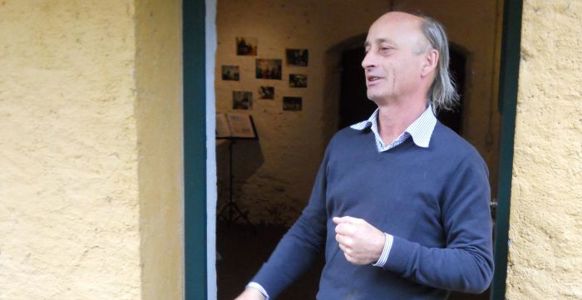Weingut Nusserhof

Weingut Nusserhof Gallery
Thank you to importer Louis/Dressner for this estate profile.
The Nusserhof estate lies directly beside the Isarco River facing south, practically in the center of the city of Bolzano. The Bolzano Valley Basin enjoys a fantastically warm climate and the deep alluvial soils are rich in eroded porphyry. It’s a perfect place to ripen grapes for a northern Italian climate.
Elda & Heinrich Mayr are the latest generation of their family to work this land, where the records date back to at least 1788. The Nusserhof gets its name from the walnut trees that once lined the house on the river side. Not so long ago they were torn out to put in a municipal bike path. This is typical of the recent history of Nusserhof. As the years have gone by, the urban environs of the city of Bolzano have continually encroached the estate. And the city has systematically made it harder and harder for the Mayrs to continue their farming. In fact, it is believed that the only reason the estate is still in existence is due to the fact that one of Heinrich’s relatives was an early opponent of the Nazi occupation and died as a Catholic martyr and conscientious objecter in a concentration camp. On their 2.5 hectares surrounding the house, the Mayrs cultivate Lagrein and Blatterle, two native grapes of the region. There is also a tiny bit of Teroldego planted. The vines are about 50% in guyot trellising and about 50% in pergola. They also own a 1.5 hectare plot on a steep slope right off the highway. The vines, trained in pergola, are planted mainly in Schiava but are very old and actually a field blend of many grapes both red and white, most of which the Mayrs do not know the name of. The viticulture is organic, certified by the German agency Bioland.
Blatterle, an old white varietal indigenous to the area, has nearly become extinct. The grapes are golden and oval shaped – the name itself means “little leaf” in German. At one time the grape was used to produce either sweet must (to be served with roast chestnuts), or a light white wine for quaffing. The Mayrs produce a more serious wine by reducing yields and soft pressing of the grapes. It’s a wine that is very mouthfilling and easy. There is also a briny salinity to it. Lagrein is a much older native grape, dating back at least 600 years. Heinrich’s Riservas are made with an idea to preserve the full-bodied, freshly aromatic woodland berry character of the grape. He does not use any barriques and the wine is bottled a year or so after the harvest and then aged in bottle before release. DOC law allows for a Riserva to be sold three years after the harvest at the earliest. It is a deliciously round wine that is served well by decanting for aeration. From older vintages we have tasted at the Nusserhof cellar, the wines age brilliantly. There is also a limited amount of Lagrein Kretzer (Rosé) available each year. Like the white, it is made from destemmed grapes that are immediately pressed and fermented in stainless steel. It is a beautiful cherry pink color and also will age quite well over a few years. It is a pleasure to bring such delicious, distinctive wines to the United States and we look forward to many more great wines from the Nusserhof in the Southern Tyrol.
Background
- Name of Estate: Weingut Nusserhof
- Region: Trentino-Alto Adige/Südtirol
- Country: Italy
- Proprietor: Heinrich, Elda and Gloria Mayr
- Size: 4 hectares
- Farming: Organic (Certified)
- Soils: Sand and granite
- Grapes grown: Lagrein, Blatterle, Teroldego, Schiava
- Fun facts: The first Teroldego Jules and ever tried was by Nusserhof. They provocatively called it Tyroldego because it was denied the appellation (it's now called T........) and he thought Foradori spelled the grape wrong.





